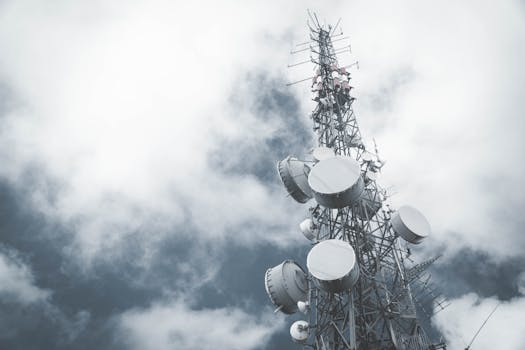Revolutionizing Connectivity: The Latest Breakthroughs in Satellite Telecommunications

Revolutionizing Connectivity: The Latest Breakthroughs in Satellite Telecommunications
Revolutionizing Connectivity: The Latest Breakthroughs in Satellite Telecommunications are transforming the way we live, work, and communicate. With the increasing demand for global connectivity, satellite telecommunications have become a vital component of modern communication systems. The latest breakthroughs in this field have enabled faster, more reliable, and more accessible connectivity, bridging the gap between urban and remote areas.
Introduction to Satellite Telecommunications
Satellite telecommunications involve the use of artificial satellites to transmit and receive data, voice, and video signals. This technology has been around for several decades, but recent advancements have significantly improved its capabilities and accessibility. Satellite telecommunications offer a wide range of services, including broadband internet, mobile networks, and television broadcasting.
Breakthroughs in Satellite Technology
Several breakthroughs have contributed to the revolution in satellite telecommunications. One of the most significant advancements is the development of high-throughput satellites (HTS). HTS satellites offer faster data transfer rates, higher capacities, and more efficient use of bandwidth. This has enabled the provision of high-speed internet services, even in remote and underserved areas.
Another significant breakthrough is the use of low-Earth orbit (LEO) satellites. LEO satellites orbit the Earth at an altitude of around 2,000 kilometers, which is much lower than traditional geostationary satellites. This lower altitude reduces latency, increases signal strength, and enables real-time communication. LEO satellites are being used for a variety of applications, including satellite constellations, which are networks of multiple satellites working together to provide global coverage.
Applications of Satellite Telecommunications
Satellite telecommunications have a wide range of applications, including:
High-speed internet: Satellite internet services are providing fast and reliable connectivity to remote and underserved areas. This is enabling people to access online services, communicate with others, and participate in the digital economy.
Remote connectivity: Satellite telecommunications are being used to connect remote areas, such as rural communities, offshore platforms, and emergency response teams. This is enabling people to stay connected and access critical services, even in areas where traditional communication infrastructure is lacking.
Disaster response: Satellite telecommunications are playing a critical role in disaster response and recovery efforts. Satellites are being used to provide emergency communication services, assess damage, and coordinate relief efforts.
Future of Satellite Telecommunications
The future of satellite telecommunications is promising, with several new technologies and innovations on the horizon. One of the most exciting developments is the use of 5G networks in satellite communications. 5G networks offer faster data transfer rates, lower latency, and greater connectivity, which will enable a wide range of new applications and services.
Another significant development is the use of quantum cryptography in satellite communications. Quantum cryptography enables secure communication over long distances, which is critical for sensitive applications such as financial transactions and military communications.



